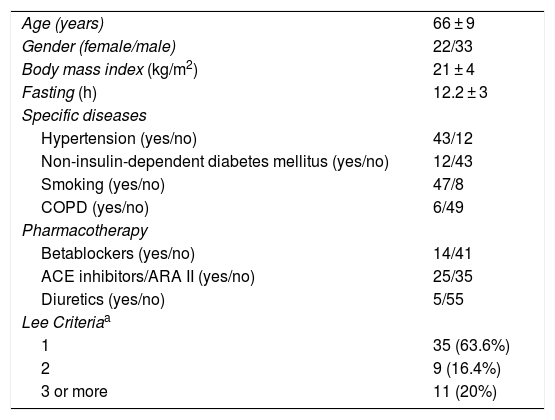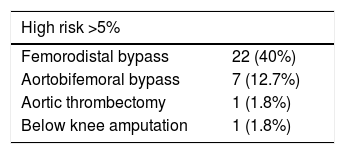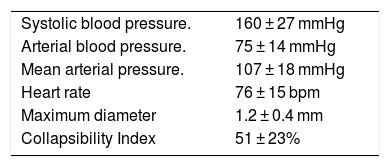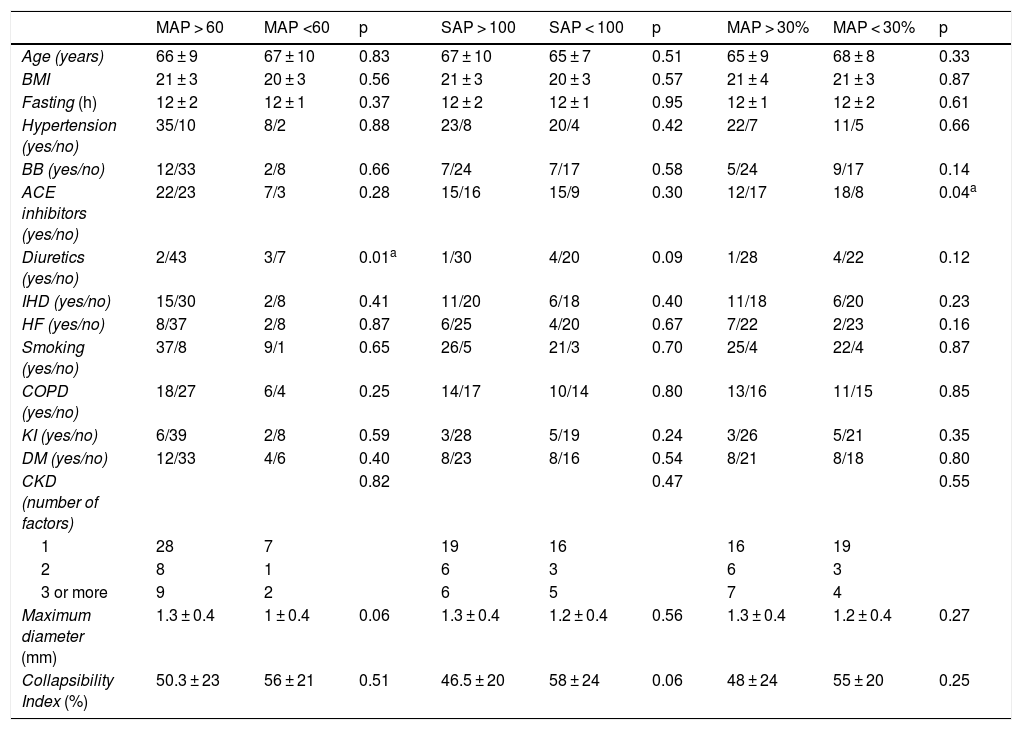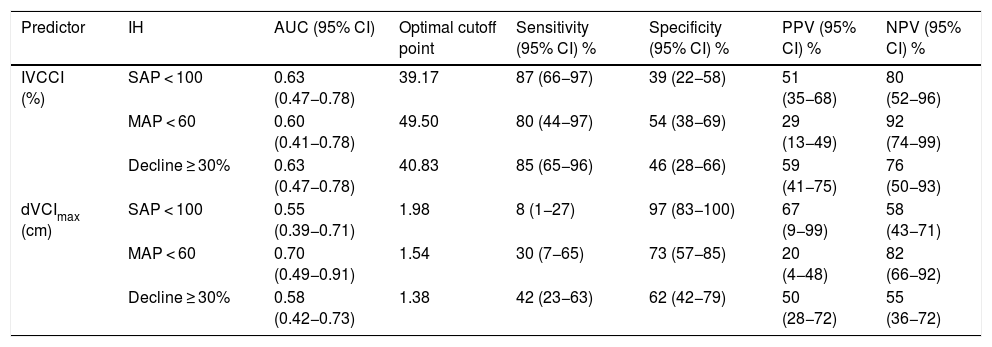Intraoperative hypotension (IH) is an independent predictor of mortality. Some experts have suggested that ultrasound measurement of the inferior vena cava (IVC) in spontaneous ventilation can predict IH.
ObjectiveTo evaluate the capacity of ultrasound measures of IVC in spontaneous ventilation to predict episodes of IH after anaesthesia induction.
Patients and methodsWe studied 55 high-risk cardiac patients undergoing vascular surgery. The maximum (dIVCmax) and minimum (dIVCmin) diameter of the IVC were measured and the collapsibility index CI = (dIVCmax–dIVCmin)/dIVCmax was calculated prior to anaesthesia induction. Three definitions of IH were used: systolic blood pressure (SBP) less than 100 mmHg, mean arterial pressure (MAP) less than 60 mmHg, and a decrease in MAP greater than or equal to 30% compared to baseline.
ResultsThere were no significant differences in dIVCmax or in CI between patients presenting IH after anaesthesia induction and those who did not. ROC curves for dIVCmax showed an area under the curve of 0.55 (0.39−0.70), 0.69 (0.48−0.90), and 0.57 (0.42−0.73) and ROC curves for the CI were 0.62 (0.47−0.78), 0.60 (0.41−0.78) and 0.62 (0.47−0.78) for the 3 definitions of IH (<100 mmHg, MAP < 60 mmHg, and MAP ≥30% baseline), respectively.
ConclusionsUltrasound measurements of IVC in spontaneous ventilation are not good predictors of IH after anaesthesia induction in these patients. The optimal cut-off points show low specificity and moderate sensitivity for predicting IH.
La hipotensión arterial intraoperatoria (HIO) es un predictor independiente de mortalidad. Las medidas ecográficas de la vena cava inferior (VCI) en ventilación espontánea han sido propuestas como predictores de este evento.
ObjetivoEvaluar la capacidad de las medidas ecográficas de la VCI en ventilación espontánea para predecir episodios de HIO postinducción anestésica.
Pacientes y métodosEstudiamos a 55 pacientes de alto riesgo cardíaco tratados mediante cirugía vascular. Previamente a la inducción anestésica se midió el diámetro máximo de la VCI (dVCImáx.), el diámetro mínimo (dVCImín.) y el índice de colapsabilidad (ICVCI = dVCImáx.−dVCImin.)/dVCImáx.). Se utilizaron 3 definiciones de HIO: presión arterial sistólica menor de 100 mmHg, presión arterial media (PAM) menor de 60 mmHg o un descenso de la PAM mayor o igual al 30% respecto a la PAM basal.
ResultadosNo hubo diferencias significativas en el dVCImáx. ni en el ICVCI entre quienes presentaron HIO postinducción anestésica y quienes no. Las curvas ROC para el dVCImáx. mostraron un área bajo la curva de 0,55 (0,39–0,70); 0,69 (0,48–0,90) y 0,57 (0,42–0,73), mientras que para el ICVCI fueron de 0,62 (0,47–0,78); 0,60 (0,41–0,78) y 0,62 (0,47–0,78), para las definiciones de HIO de < 100 mmHg, PAM < 60 mmHg y descenso de la PAM ≥ 30%, respectivamente.
ConclusionesLas medidas ecográficas de la VCI en ventilación espontánea no son buenos predictores de HIO postinducción anestésica en estos pacientes. Los puntos de corte óptimos permiten predecir hipotensión con baja especificidad y moderada sensibilidad.





